

Our scientific and academic activities encompass a wide spectrum, from basic to clinical research. Our goal is a comprehensive resolution of childhood health issues through the development of innovative diagnostic, therapeutic, and preventive strategies.
Currently, our laboratory has 6 subgroups with 8 principal investigators.
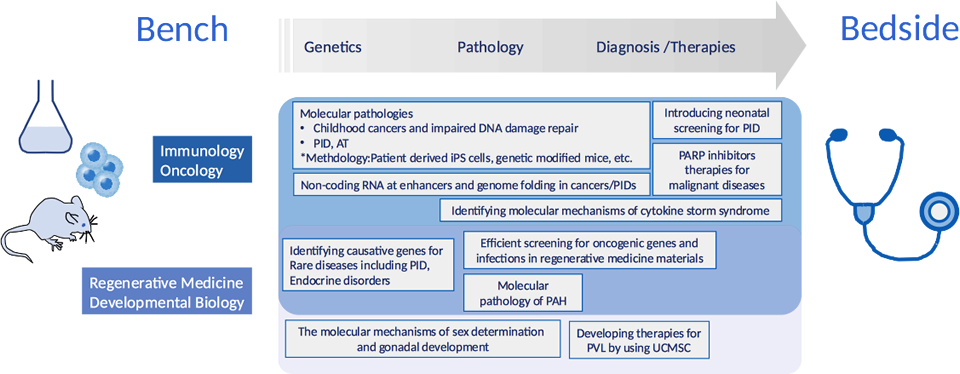
All medical staffs are Board certified pediatrician
| Professor | Tomohiro Morio, PhD., MD. | (Immunology/Hematology/Oncology, Regenerative Medicine) | tmorio.ped(at)tmd.ac.jp |
|---|---|---|---|
| Associate Professor | Masatoshi Takagi, PhD., MD. | (Immunology/ Hematology/ Oncology) | m.takagi.ped(at)tmd.ac.jp |
| Junior Associate Professor | Kenichi Kashimada, PhD., MD. | (Endocrinology, Genetics, Regenerative Medicine) | kkashimada.ped(at)tmd.ac.jp |
| Junior Associate Professor | Takeshi Isoda, PhD., MD. | (Immunology/ Hematology/ Oncology) | tisoda.ped(at)tmd.ac.jp |
| Junior Associate Professor | Susumu Hosokawa, PhD., MD. | (Cardiology) | shosokawa.ped(at)tmd.ac.jp |
|---|---|---|---|
| Assistant Professor | Chikako Morioka, PhD., MD. | (Neonatology) | cmorped(at)tmd.ac.jp |
| Professor | Hirokazu Kanegane, PhD., MD. | (Immunology/ Hematology/ Oncology) | hkanegane.ped(at)tmd.ac.jp |
|---|---|---|---|
| Junior Associate Professor | Masaki Shimizu, PhD., MD. | (Rheumatology) | mshimizu.ped(at)tmd.ac.jp |
Inborn errors of immunity (IEI) are disorders in which the immune system does not function normally and it leads to autoinflammatory disease, autoimmunity, and increased susceptibility to infections. IEI is a heterogeneous group of diseases caused by more than 400 genetic disorders. Its prevalence was previously estimated to be more than 1 case for every 1000 newborns. However, it is potentially more prevalent. In IEI, early diagnosis is essential to prevent recurrent infections from escalating into more serious conditions. A substantial number of IEI patients also require hematopoietic stem cell transplantation during early childhood.
Based on a multicenter collaboration, we launched the primary immunodeficiency disease registration system (PIDJ) (version 2 in progress) to allow the nationwide sharing of patient clinical information. We aim to identify the candidate genes of IEI through the use of this system. Another one of our major goals is the elucidation of the molecular pathophysiological pathways of IEI.
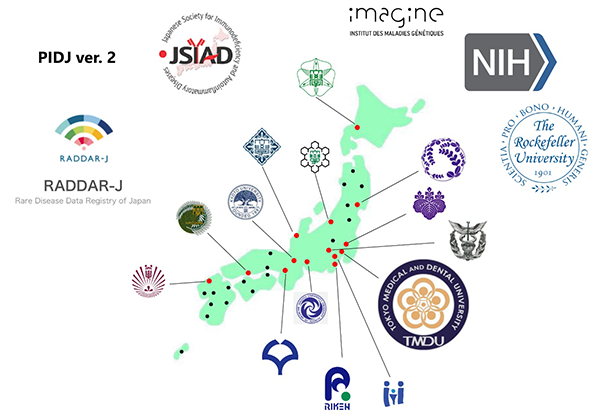
We have also customized several diagnostic tests for IEI, such as flow cytometry analysis and digital PCR, to enable the standardization of treatment decisions.
For the early diagnosis of PID, we plan to develop and introduce neonatal mass-screening for PID in Japan. TREC (T-cell receptor excision circles) and KREC (kappa-deleting recombination excision circles) are excellent biomarkers for the identification of severe forms of PID with T and B cell lymphopenia. Neonatal mass screening for PID, by using TREC and KREC as biomarkers, has been introduced in several countries. Currently, we are recruiting volunteer participants and planning to establish similar efficient screening programs in Japan.
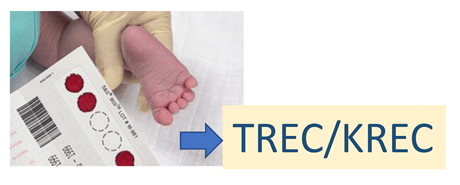
Japan Society for the Promotion of Science Grant-in-Aid for Scientific Research (B) 「Functional assignment of IKZF transcription factors by physiological structural differences and modulation of transcriptional regulation by variants.」2021-2023 (Principal Investigator: Tomohiro Morio)
AMED Practical Applications of Regenerative Medicine 「Development and study of third-party-derived multiple virus-specific T cell therapy for treatment-resistant viral infections after hematopoietic cell transplantation.」2022-2024 (Principal Investigator: Tomohiro Morio)
AMED Clinical Trials for Development of New Drugs 「Research to develop concepts for clinical research and investigator-initiated clinical trials utilizing the Primary Immunodeficiency Database in Japan」2020-2022 (Principal Investigator: Tomohiro Morio)
AMED Rare / Intractable Diseases 「Initiative on Rare and Undiagnosed Diseases (IRUD): Research on the development of diagnostic programs for rare and undiagnosed diseases」2021-2023 (Principal Investigator: Hidehiro Mizusawa, Member of the research project: Tomohiro Morio)
Japan Society for the Promotion of Science Grant-in-Aid for Scientific Research (C) 「Pathophysiology and therapeutic development of autoinflammatory diseases with neutrophil abnormalities」2021-2023 (Principal Investigator: Fumiko Ozaki)
Japan Society for the Promotion of Science Grant-in-Aid for Scientific Research (C) 「Research to elucidate the common pathogenic mechanism of neutropenia and B-cell deficiency」2022-2024 (Principal Investigator: Hirokazu Kanegane)
Grant-in-Aid for Early-Career Scientists (KAKENHI) 「Pathophysiology of lymphocyte differentiation defects due to dysregulation of coordinated transcriptional regulation of IKZF family members.」2020-2023 (Principal Investigator: Motoi Yamashita)
Tanita et al. (co-first author) J Exp Med. 2018 Nov 5;215(11):2715-2724
Yeh et al. J Allergy Clin Immunol. 2020 Nov;146(5):1109-1120
Yamashita et al. Nat Immunol. 2021 Jul;22(7):893-903
Okano et al. Sci Immunol. 2021;6(60):eabf9564
Ono et al. J Allergy Clin Immunol Pract. 2021;9(10):3767-3780
Nishimura et al. J Clin Immunol. 2021;41(5):944-957
Miyamoto et al. J Clin Immunol. 2021;41(8):1865-1877
Miyamoto et al. J Clin Immunol. 2022;42(3):529-545
Two major topics of our current research
・Developing a therapeutic strategy for childhood cancer by exploiting PARP (poly-(ADP ribose) polymerase) inhibitors: PARP is involved in a number of fundamental cellular processes such as DNA repair and genomic stability. Cancer cells are more dependent on PARP for their development and maintenance than normal cells.
・Identifying the roles of ATM in cellular differentiation: ATM is a kinase which is activated by DNA double-strand breaks and initiates the activation of the DNA damage checkpoint, leading to cell cycle arrest, DNA repair or apoptosis. The precise roles of ATM in cell differentiation are not known. We are analyzing cellular differentiation by using ATM-deficient conditions in vitro and in vivo.
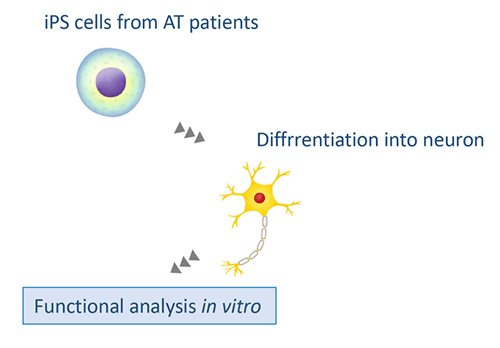
Although cancer death rates have declined in recent years, cancer remains the leading cause of death in children. We are conducting research in the following areas to develop novel therapeutic strategy.
・Developing a treatment strategy for childhood cancer using PARP inhibitors that target molecular abnormalities associated with DNA damage repair responses.

・Omics analysis for prognostic stratification of infant acute lymphoblastic leukemia.

Research to identify the genetic background of childhood acute lymphoblastic leukemia using GWAS and other methods.
・Elucidation of the pathogenesis of acute myeloid NK precursor cell leukemia.
・Developing gene therapy for ataxia telangiectasia.
・Identifying the effects of RAS mutations on lymphocyte differentiation and developing a methodology that controls cellular differentiation by targeting RAS
・Elucidating oncogenic mechanisms caused by primary immunodeficiencies
First phase 1 clinical study of olaparib in pediatric patients with refractory solid tumors.
Takagi et al. Cancer 2022 doi . 10.1002/cncr.34270
Japan Society for the Promotion of Science Grant-in-Aid for Scientific Research (B)
「Identification of novel responsive genes for pediatric ALL development」(2019-2021)
(Principal investigator: Masatoshi Takagi)
Japan Agency for Medical Research and Development (AMED)
Project Promoting Clinical Trials for Development of New Drugs" Development of therapeutic approach using olaparib for refractory pediatric malignant solid tumor" (2016-2020) (Principal investigator: Masatoshi Takagi)
Dr. Takagi's investigator-initiated clinical trial is also
Japan Agency for Medical Research and Development (AMED)
Project for Seeds Development and Research Base Seeds A "Development of gene therapy for ataxia telangiectasia " (2022-2023) (Principal investigator: Masatoshi Takagi)
During cell development, changes in nuclear localization of lineage‐specific genes from a transcriptionally inert to the permissive environment are crucial steps in the establishment of cell identity. Non-coding RNA ThymoD (thymocyte differentiation factor) transcription at the super-enhancer of the BCL11b gene is essential for establishing enhancer-promoter communication in T‐cell fate decisions. The cessation of ThymoD transcription abolishes transcription‐mediated demethylation, leading to the recruitment of looping factors such as the cohesin complex, CCCTC‐binding factor (CTCF). These ultimately lead to the development of severe combined immunodeficiency and T‐cell leukemia/lymphoma. The disruption of non-coding RNA transcription‐mediated genome folding and activation of target gene expression could be involved in the pathogenesis of cancer and primary immunodeficiency diseases. To establish the best method for the diagnosis and therapies of non-coding mutation-related diseases, we are investigating the functional role of RNA polymerase II‐mediated transcription at enhancers and in genome folding.
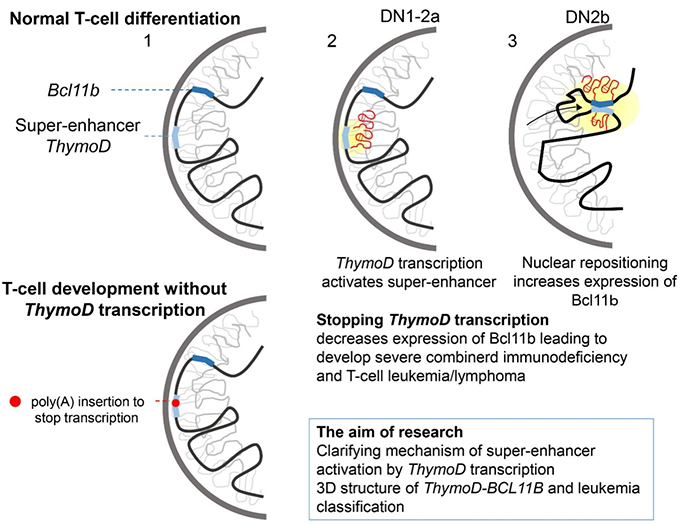
During cell development, changes of nuclear localization of lineage‐specific genes from a transcriptionally inert to permissive environment are a crucial step in establishing the identity of a cell. Noncoding RNA ThymoD (thymocyte differentiation factor) transcription at super-enhancer of the Bcl11b gene is essential for establishing enhancer-promoter communication in T‐cell fate decision. The cessation of ThymoD transcription abolishes transcription‐mediated demethylation, recruiting looping factors such as the cohesin complex, CCCTC‐binding factor (Ctcf), ultimately leading to the phenotype of severe combined immunodeficiency and T‐cell leukemia/lymphoma. Disruption of noncoding RNA transcription‐mediated genome folding and activation of target gene expression could be involved in the pathogenesis of cancer and IEIs. To establish the method for non-coding mutation-related disease diagnosis and therapeutical applications, we are investigating the functional role of RNA polymerase II‐mediated transcription at enhancers and genome folding of ThymoD-BCL11B in leukemias.
Denholtz et al. Genes Dev. 2020 Feb 1;34(3-4):149-165
Isoda et al. Cell. 2017 Sep 21;171(1):103-119
Isoda et al. (co-first author) PNAS. 2015 Oct 13;112(41):12776-12781
Japan Society for the Promotion of Science Grant-in-Aid for Scientific Research (B)
「Identification of mutations in regulatory regions and mechanisms of non-coding RNA
transcription and super-enhancer activation.」2021-2023 (Principal Investigator: Takeshi Isoda)
Kawano Pediatric Medical Grant 「Elucidation of the mechanism of primary immunodeficiency diseases and leukemia pathogenesis using long read sequencing.」2021 (Principal Investigator: Takeshi Isoda)
Platform for Advanced Genome Science 「Mechanisms of non-coding RNA transcription-mediated enhancer activation in cancer and primary immunodeficiency diseases.」2020 (Principal Investigator: Takeshi Isoda)
Sex differentiation is the process of differentiation to become male or female from an undifferentiated egg. Disorders/differences in Sex Development (DSD) is a congenital condition where the sex differentiation is atypically processed, resulting in the discordant development of chromosomal, gonadal and anatomical sex. Atypical genitalia which does not appear to be clearly either male or female is one of the phenotypes of DSD. Genital ambiguity is likely the most devastating condition any parent of a newborn can face, second only to perinatal death.
To understand the pathophysiology of DSD, our current research focuses on the elucidation of the molecular mechanisms of sex determination and gonadal development, especially in the understanding of the transcriptional network of sex determination and gonadal development. Another of our major target if to identify the precise functions of transcription factors, such as Nr5a1 (Sf1), Foxl2, and Sox9, in gonadal development.
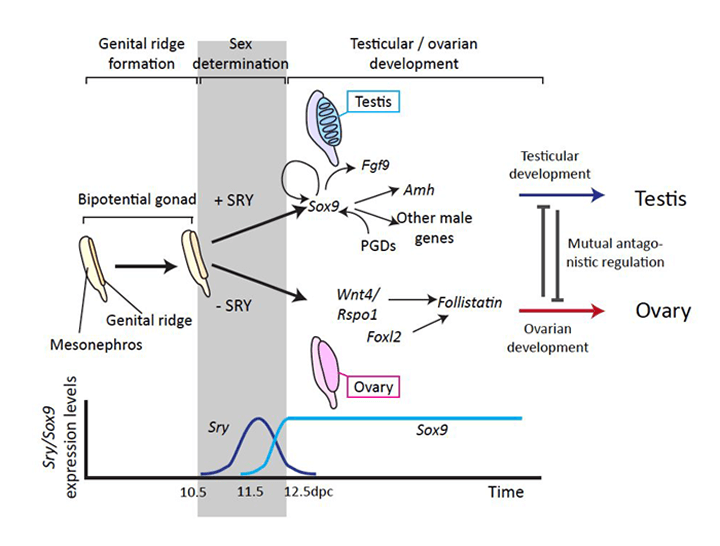
Our institute contributed to the introduction of CAH neonatal mass-screening in Tokyo city. Recently, in addition to adrenal insufficiency and androgen excess, metabolic syndrome during adulthood is reported to be another major concern of the disease. The precise pathophysiology is not known. We are thus focusing on the elucidation of the molecular mechanisms of the metabolic syndrome in CAH patients through the use of a mouse model.
We aim to identify novel molecules responsible for the development of congenital endocrine disorders such as insulin resistance.
J Cell Sci. 2019 Apr 15; 132(8)
Sci Rep. 2018 Sep 5; 8(1):13263
Pediatr Diabetes. 2017 Dec; 18(8):917-924
Japan Society for the Promotion of Science Grant-in-Aid for Scientific Research
Elucidating comprehensive transcriptional network of gonadal somatic cells by a novel transcriptome strategy
(Principal Investigator: Kenichi Kashimada)
Japan Society for the Promotion of Science Grant-in-Aid for Early-Career Scientists
Clarifying pathological mechanism of congenital severe insulin resistance syndrome by using disease-specific iPS cells and comprehensive genetic analysis」2018
(Principal Investigator: Kei Takasawa)
It has been reported that "changes in the properties of tissue stem cells" are involved in the establishment of many diseases. In addition, it is considered essential to consider "changes in stem cell characteristics" in the development of cellular products using human-derived stem cells. We will compare and analyze the gene expression profiles of mesenchymal stem cells collected from umbilical cords and dental pulp to elucidate their relationship with disease establishment and to accumulate basic data for cell therapy.
"Basic study on the profile changes of umbilical cord blood and umbilical cord-derived mesenchymal stem cells in various intrauterine environments"
We will collect umbilical cord-derived mesenchymal stem cells with various background factors, such as intrauterine infection and fetal growth restriction, and examine the relationship between profile changes and disease establishment.
"Investigation of profile changes in stem cells from human exfoliated deciduous teeth (SHED) in children with cerebral palsy due to periventricular leukomalacia."
As basic data for exploring the possibility of dental pulp stem cell therapy for periventricular leukomalacia, a complication of preterm infants, we are collecting stem cells from human exfoliated deciduous teeth of children with cerebral palsy due to periventricular leukomalacia and analyzing their profile.
Yusuke Noguchi, Atsuko Taki, Izumi Honda, Manabu Sugie, Tsunanori Shidei, Kazuyuki Ito, Haruka Iwata, Akira Koyama, Kaoru Okazaki, Masatoshi Kondo, Chikako Morioka, Kenichi Kashimada, Tomohiro Morio. Sci Rep 2022 (2022) 12:6537
Japan Society for the Promotion of Science Grant-in-Aid for Research Activity Start-up
「Identification of risk factors for the lifestyle diseases in using umbilical cord-derived mesenchymal stem cells with fetal growth restriction」
(Principal Investigator: Chikako Morioka)
Japan Society for the Promotion of Science Grant-in-Aid for Early-Career Scientists
「Analysis of dental pulp stem cells in children with periventricular leukomalacia to establish the stem cell therapy and elucidate for the pathogenesis of the disease」
(Principal Investigator: Haruka Iwata)
Based on our extensive experience in the treatment of numerous idiopathic/hereditary PAH patients, our current research aims to establish an innovative therapeutic approach by identifying novel target molecules that cause idiopathic/hereditary PAH. One of the possible candidates is dexmedetomidine (DEX), an alpha-2 adrenergic agonist, used as a sedative in clinical settings. Currently, we are also examining the functions of the molecule by using monocrotaline (MCT)-induced PAH model rats. Our preliminary data suggest that DEX dramatically improves the survival rate and right ventricular systolic pressure in MCT-induced PAH model rats. In addition, we aim to identify the roles of Pannexin-1 in the development of right ventricular hypertrophy due to pulmonary hypertension.
Japan Society for the Promotion of Science Grant-in-Aid for Scientific Research
「What is the role of glucagon-like peptide-1 and its degrading enzyme dipeptidyl peptide-4 for the pathophysiology of pulmonary arterial hypertension?」(2020-2022)
(Principal Investigator: Susumu Hosokawa)
Cytokine storm syndrome (CSS), also referred to as cytokine release syndrome, is defined as the systemic expression of a vast array of inflammatory mediators that impact the body as a whole. CSS is closely associated with hemophagocytic lymphohistiocytosis (HLH). HLH is clinically characterized by fever, hepatosplenomegaly, lymphadenopathy, profound depression of all three blood-cell lines, altered liver function, intravascular coagulation, and central nervous system dysfunction. The hallmark of CSS is uncontrolled immune response involving continual activation and expansion of T lymphocytes and macrophages, resulting in marked hypercytokinemia. HLH is divided into primary or familial, and secondary or reactive, forms of HLH. We perform immunological analysis in patients with secondary HLH resulting from infectious and rheumatic triggers towards identifying molecular mechanisms of cytokine storm syndrome and establishing therapeutic strategy.
Rheumatology. 2020 in press.
Japan Society for the Promotion of Science Grant-in-Aid for Scientific Research
「Identifying molecular mechanisms of macrophage activation syndrome and establishing therapeutic strategy targeting interleukin-18」(2018-2020)
(Principal Investigator: Masaki Shimizu)